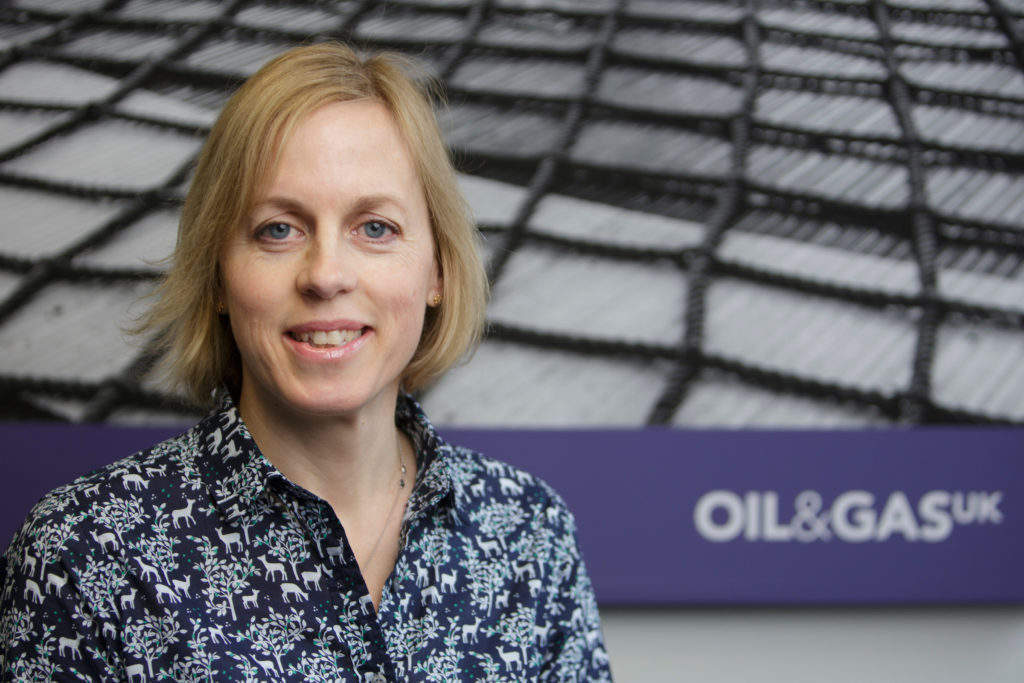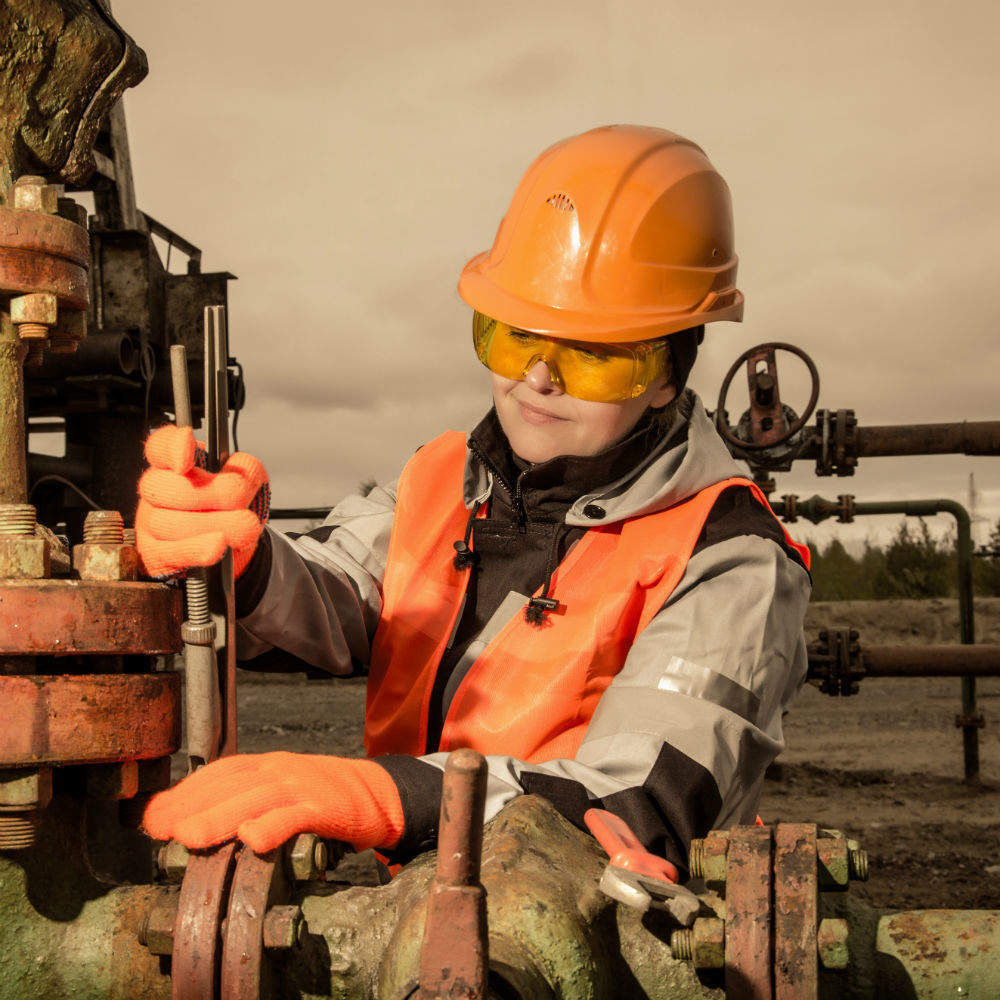
For her book The Oil Industry’s Best Kept Secret: A book full of inspiration and advice, to be published on 2 November 2018, Katy has interviewed women in oil and gas from different disciplines, both technical and non-technical, and at different stages in their career, from young engineer to chief executive officer.
She aims to shine a light on their exciting and diverse professional lives, showing how they have successfully managed their careers and the fun that they have had along the way.

What qualities do women bring to the oil and gas, and power sector?
The business case for gender equality is well understood; companies with more diverse boards perform better financially. We know that diverse teams are more creative and more productive.
Women can bring different leadership skills and behaviours, but it’s not just about diversity of gender, it’s about diversity of thought; more balanced teams make better decisions. This is invaluable in an industry reliant on new ways of working to boost productivity levels and unlock efficiencies.
The growth of jobs in the energy sector
We will need to recruit over 40,000 people between 2018 and 2035 – this includes 10,000 people in new areas such as data science, robotics, material science, nano-technology and cyber security. Most of the roles in the oil and gas industry are based onshore and over a quarter of them are non-technical, including areas such as business development, law, finance and administrative support.
Women make up half the talent pool and it’s important we ensure that we don’t lose the opportunity to celebrate their achievements whilst encouraging the next generation of pioneers.
The oil and gas sector must build upon its efforts to recruit and retain a diversity of new talent into the industry if it is to realise its ambition for the future, Vision 2035.
Women are under-represented in the oil and gas sector
It’s not just the oil and gas industry that fails to attract women – our figures are broadly in line with other science, technology, engineering and mathematics (STEM)-based sectors (‘Fuelling the Next Generation’ report, 2014.)
Leaders of businesses have the power to close the gender gap in career advancement and pay.
Accenture’s recent report, ‘Getting to Equal 2018: Creating a culture where everyone thrives’, shows that creating a culture of equality unlocks human potential and uncovers the key drivers of a workplace culture in which everyone can advance and thrive. The report states that culture is an accumulation of norms and customs that evolve over time, and leaders increasingly recognise that they need to be more proactive in shaping it. If they succeed, they will create a more diverse, engaged and highly-skilled workforce. It is not just about having policies and practices, but also about effectively implementing them.
Leading companies have policies and practices that are family-friendly and an empowering environment that trusts employees, respects individuals and offers freedom to be creative and to train and work flexibly. It has improved overall but the industry accepts it needs to do more.

Lower numbers of women in senior positions in the oil and gas industry
Pay gap reporting reflects a higher proportion of men in senior positions. The results highlight that there are fewer women in senior technical and/or managerial roles. Women make up the majority of part-time workers, who tend to be lower paid.
Going forward, Oil and Gas UK member companies are looking at how to further address the gap within their own organisations. Undoubtedly, gender pay gap reporting has shone a light on the issue and re-energised the debate on increasing female participation in the sector. The interest generated by gender pay gap reporting, together with the initial insights regarding the impact of technology on job roles from the Workforce Dynamics Review, presents a positive opportunity to move the skills debate forward.
How can we inspire women to work in the energy sector?
We need to increase the number of girls studying STEM subjects, more flexible working hours, improved training and a higher awareness of the types of the jobs in the oil and gas sector.
Prominent female role models to raise awareness of jobs in the oil and gas sector
We need female role models to be more visible. When making a choice about which path to take, most of us look for other people whose example or success we can emulate… we look for workplaces we can imagine ourselves in, doing a job that is fun alongside people who are nice. There are plenty of television dramas that make professions like law or medicine exciting and glamorous.
Not enough people outside the oil and gas industry understand what we’re about; poorly founded misconceptions mean that many would overlook us and miss out on one of the best industries.
At the heart of my book is a desire to raise the profile of just a few of the women who have helped to shape our industry. I hope that by reading the book more girls will be inspired by the stories and can imagine themselves working beside us.
While we have a lot of data on women in industry – we do need to broaden our understanding of our workforce to ensure true diversity and inclusion. That’s why I wanted this book to focus on female talent in this industry – they are there we just don’t hear about them enough and celebrate their achievements.
Making the oil and gas sector accessible for women
The oil and gas industry continues its efforts to increase female participation in STEM roles both on and offshore. For example, the Oil and Gas Technical Apprentice Programme (OGTAP) Steering Group has established a diversity group to explore ways to attract more female applicants to the industry apprenticeship scheme, including running events for female school pupils at North East Scotland College (NESCol), the local college that delivers the training.
Also, many companies have proactive policies designed to encourage female retention and progression, and support efforts to encourage female STEM subject uptake in schools.
Shell’s Girls in Energy programme
There are also existing industry initiatives to boost the number of females within oil and gas, such as Shell’s Girls in Energy programme. The one-year programme is delivered in partnership with NESCol. It delivers weekly lessons, workshops and field visits to young women aged 14–16 in secondary education with a view to expanding their understanding of what a career in the energy industry could involve. Additionally, the Women into Science and Engineering (WiSE) campaign has consistently advocated the recruitment of more women in STEM roles.
What advice would you give to women thinking of working in the oil and gas industry?
As a major employer, the oil and gas industry in the UK alone supports 330,000 skilled jobs, many of which are engineering orientated. It’s an innovative, exciting and changing industry, with some brilliant women engineers helping to drive it forwards.
Don’t be put off by the fact that the industry is male dominated; what you will find is this is a dynamic, fun place to work with a huge range of exciting roles and your contribution will be enormously valued. Women are treated well – there is progressive, forward thinking and flexible working opportunities as well as vast opportunities for career progression.
Diversity makes good business sense and is a key priority for our industry – this is why Oil & Gas UK is leading a cross-industry initiative on diversity and inclusivity.
If someone is looking for a career which offers lots of potential in terms of international travel, diverse opportunities to expand their skills, and immense job satisfaction, the oil and gas industry is a great place to start.

Is the UK Government doing enough to encourage gender diversity in the energy industry?
Delivering real diversity is going to take everyone’s full efforts – government, charity and industry working together. Women make up 23% of the oil and gas workforce and 13% of the technical workforce.
A number of tactics are being undertaken by government and also by leading employers. These include enhanced maternity pay, support for women returners, and flexible working arrangements – which are also important for men and women, and not just for childcare, but for carers too. There are also diversity support groups. However, as my book highlights so much of this is about having real role models for women to look up to.
The government has already extended the right to request flexible working to all employees, introduced shared parental leave, and commissioned a review to look at how we can remove the barriers preventing women getting to the top of their careers.
However, there is always more that we can be doing to encourage and nurture a more diverse workforce within the industry.



